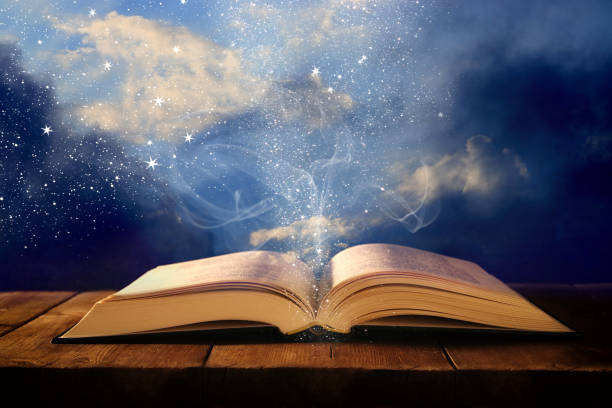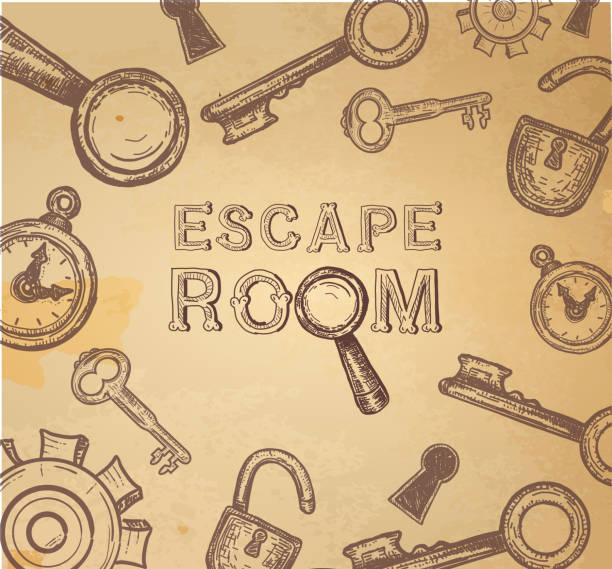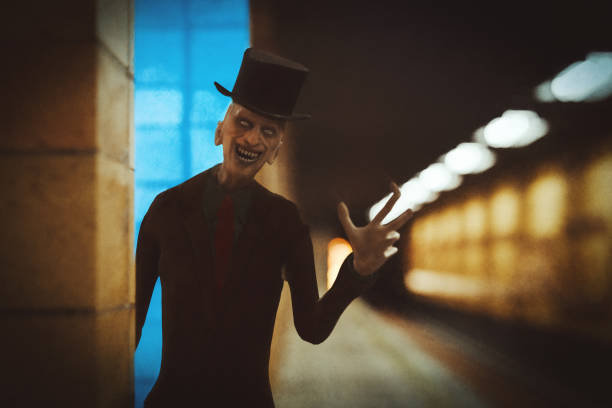How to Write a High Fantasy Novel (14 Best Tips)
Embarking on the journey of crafting a high fantasy novel is akin to stepping into a realm where imagination knows no bounds, and the mundane gives way to the extraordinary.
In this guide, we will venture through the enchanted landscapes of world-building, character creation, and the delicate dance of plot construction.
High fantasy, with its mythical creatures, epic quests, and magical realms, beckons writers to become architects of alternate worlds, where the rules of reality are supplanted by the limitless possibilities of the fantastical.
From the forging of intricate magic systems to the sculpting of compelling characters, the endeavor to write a high fantasy novel is an artistry that fuses creativity with meticulous craftsmanship.
So, ready your quill and parchment as we delve into the alchemy of words, unveiling the secrets and intricacies that bring high fantasy tales to life on the page.
How to Write a High Fantasy Novel
Writing a high fantasy novel involves several key steps. Here’s a step-by-step process to guide you:
Conceptualize Your World
Develop a rich and unique fantasy world with its own history, geography, cultures, and magical elements. Consider the rules of magic, if any, and how they impact your world.
Create Compelling Characters
Craft well-rounded characters with distinct personalities, motivations, and backgrounds. Include a mix of heroes, villains, and supporting characters to add depth to your story.
Build an Engaging Plot
Outline a captivating plot with a clear beginning, middle, and end. Introduce conflicts, quests, and challenges that drive the narrative forward.
Establish a Magic System
Define the rules and limitations of magic in your world to maintain consistency. Consider the impact of magic on characters and society.
Develop Unique Cultures
Create diverse and interesting cultures within your fantasy world, each with its own traditions, languages, and social structures.
Craft a Compelling Protagonist’s Journey
Outline the hero’s journey or protagonist’s arc, detailing their growth and development throughout the story.
Include Themes and Symbolism
Explore deeper themes and incorporate symbolism to add layers of meaning to your narrative.
Write Vivid Descriptions
Use evocative language to describe settings, characters, and events, immersing readers in your fantastical world.
Establish Consistent Tone and Style
Maintain a consistent tone and writing style that suits the atmosphere of your fantasy world.
Create Conflict and Tension
Introduce conflicts and obstacles to keep readers engaged and invested in the story.
Revise and Edit
Polish your manuscript through multiple rounds of revision to refine plot points, characters, and overall coherence.
Seek Feedback
Share your work with beta readers or writing groups to gain valuable feedback and insights.
World-Building Continuity
Ensure continuity in your world-building elements throughout the novel to maintain a cohesive and immersive experience.
Craft a Memorable Ending
Conclude your high fantasy novel with a satisfying resolution that ties up loose ends and leaves a lasting impression.
Remember, these steps are a general guide, and the writing process is highly individual. Adapt them to suit your creative process and the specific needs of your high fantasy novel.

Understanding the Genre
Delving into the enchanted realm of high fantasy is akin to unlocking the gates of imagination itself. This genre, characterized by its sprawling landscapes, mythical races, and epic quests, invites writers to traverse uncharted territories where the only limits are those set by one’s own creativity.
As a storyteller, understanding high fantasy goes beyond mere comprehension; it is an odyssey through the ethereal, an exploration of worlds where magic hums in the very air, and destinies are intertwined with the threads of ancient lore.
Here, words become the architects of realms where dragons soar and heroes rise, beckoning readers to embark on a journey that transcends reality, offering an escape into a tapestry of wonder, where the impossible becomes not just conceivable but captivating.
So, step through the portal of understanding the genre, where every page is an invitation to dream, and every chapter unveils the extraordinary.
Study of classic high fantasy works
Embarking on a study of classic high fantasy works is akin to embroiling oneself in a literary pilgrimage through the hallowed halls of imagination.
From J.R.R. Tolkien’s meticulously crafted Middle-earth, where hobbits tread upon the grand stage of epic quests, to C.S. Lewis’s enchanting Narnia, a wardrobe gateway to a realm of talking beasts and eternal winters, these timeless masterpieces serve as the bedrock of the genre.
These towering literary monuments not only provide a captivating narrative but also reveal the secrets of world-building, character development, and the artful interweaving of mythical elements.
Immersed in the sagas of elves, dwarves, and the battle between light and darkness, one discovers not only the roots of high fantasy but also the essence of storytelling magic itself.
The study of these classics becomes an apprenticeship, a journey into the very heart of the genre, unlocking the wisdom that echoes through the pages of fantasy’s most revered tomes.
Exploration of sub-genres
Embarking on the exploration of high fantasy sub-genres is akin to navigating a rich and diverse tapestry of storytelling dimensions. Within the broad realm of high fantasy lie distinct territories waiting to be unveiled, each offering a unique flavor to the genre.
Epic fantasy, with its sweeping sagas and grand conflicts, immerses readers in the colossal struggles of heroes against overwhelming odds. Sword and sorcery, on the other hand, weaves tales of daring adventurers and arcane magic, with a focus on intimate, action-packed narratives.
Heroic fantasy introduces characters whose moral complexity and personal growth take center stage, adding layers of depth to their quests.
This exploration of sub-genres is not just a survey; it’s an odyssey through the varied landscapes of imagination, where the conventions of high fantasy are reimagined and reshaped, breathing new life into the genre’s enduring legacy.
As one embarks on this literary expedition, the result is a profound appreciation for the nuanced storytelling possibilities that await within the labyrinth of high fantasy sub-genres.
World-Building
World-building is the alchemical art of turning mere words into realms that pulsate with life, where every stone tells a story, and every breeze carries the whispers of ancient lore.
It’s the architect’s blueprint for dreams, an immersive plunge into the fantastical where maps unfold like secrets and cultures blossom like enchanted gardens.
World-building is the wizardry that conjures not just landscapes, but entire ecosystems of imagination. It’s not about describing the world; it’s about inviting readers to step across the threshold into a universe where the sunsets are painted in hues unimaginable and the constellations dance to an otherworldly rhythm.
It’s a symphony of details, from the celestial politics to the folklore whispered in the shadows, crafting a living, breathing tapestry that transcends the boundaries of reality.
In the realm of world-building, every stroke of the pen is a brush with magic, and every chapter is an invitation to explore the boundless landscapes of the extraordinary.
Creation of a detailed and immersive setting
The creation of a detailed and immersive setting in a high fantasy novel is akin to being an architect of dreams, sculpting the very essence of a world that breathes beneath the weight of its own mythology.
It’s not just about delineating geographical contours but about infusing the air with a tangible magic that lingers between the pages. From the soaring peaks of ancient mountains to the hidden enclaves of mystical forests, each location is a carefully woven tapestry of history and wonder.
The immersive setting is a character in its own right, whispering tales of forgotten civilizations and untold mysteries. It’s the subtle scent of exotic flora, the resonating echoes of arcane rivers, and the silhouettes of towering citadels against the canvas of an otherworldly sky.
Through meticulous detailing and a keen understanding of cultural nuances, the immersive setting becomes a portal, beckoning readers to lose themselves in a world where reality bends to the whims of the extraordinary, and every corner holds the promise of discovery.
Development of unique races and species
The development of unique races and species in a high fantasy narrative is an alchemical endeavor, weaving strands of imagination into the very fabric of a fictional cosmos.
It transcends the mere creation of fantastical beings; it is the sculpting of civilizations with distinct physiologies, cultures, and mythologies.
From the ethereal elegance of ancient elves with their immortal grace to the sturdy craftsmanship of dwarves dwelling in subterranean realms, each race is a testament to the author’s ability to breathe life into the extraordinary.
The development of unique species is not merely a surface-level endeavor; it involves delving into the intricacies of societal structures, belief systems, and the nuanced interactions that shape their existence.
Through this meticulous crafting, high fantasy authors invite readers into a world where diversity is not just a concept but a living, breathing tapestry, enriching the narrative with a kaleidoscope of perspectives and forging a connection between the real and the fantastical.
Magic Systems
In the enchanting realm of high fantasy, the creation of magic systems is akin to orchestrating a symphony of the arcane, where the rules are as vital as the spells themselves.
It’s a dance between the mystical and the logical, a delicate balance where every incantation has consequences and every source of power is a double-edged sword.
Crafting a magic system is not merely about dazzling displays of supernatural prowess; it’s about defining the very laws that govern the extraordinary.
From the ethereal whispers of ancient incantations to the palpable hum of enchanted artifacts, the magic system becomes a character in its own right, shaping destinies and weaving its influence through the narrative’s every fiber.
It’s the art of making the impossible not only believable but utterly captivating, inviting readers to immerse themselves in a world where the boundaries of reality are but fragile veils waiting to be pierced by the extraordinary.

Designing a coherent and consistent magic system
Designing a coherent and consistent magic system in a high fantasy narrative is akin to sculpting an intricate tapestry of wonder, where every thread follows a logical pattern, and every weave resonates with a distinct purpose.
It’s not merely about conjuring dazzling feats of enchantment but about establishing a set of rules that govern the mystical forces at play.
A well-crafted magic system adheres to its own internal logic, ensuring that the fantastical elements seamlessly integrate into the fabric of the world without disrupting the narrative flow.
Whether it’s the ancient rituals fueled by celestial energies or the wielders’ connection to elemental forces, consistency becomes the linchpin that transforms the extraordinary into the believable.
This coherence provides readers with a sense of immersion, allowing them to navigate the enchantment with anticipation rather than confusion, and elevates the magic system from a mere plot device to an integral part of the narrative’s allure.
Integration of magic into the world
The integration of magic into the world of high fantasy is a sublime dance between the extraordinary and the mundane, where the ethereal seamlessly weaves itself into the very fabric of existence.
It’s not merely about showcasing grand displays of supernatural prowess but about infusing the everyday with an enchanting undercurrent.
From the subtle glow of enchanted street lamps to the mystical currencies that fuel commerce, magic becomes a silent companion, an unseen force shaping the contours of society.
The integration of magic is not just a spectacle; it’s a cultural phenomenon that seeps into every aspect of life, from the mystically imbued traditions to the pragmatic applications in daily tasks.
It transforms the ordinary into the extraordinary, inviting readers to witness a world where the mystical and the mundane coalesce in a harmonious ballet, blurring the lines between reality and fantasy.
Character Development
Character development in the realm of high fantasy is akin to watching personalities unfurl like ancient scrolls, revealing layers that echo with the resonance of destiny.
These characters are not mere ink on parchment; they are living, breathing entities navigating the tumultuous waters of myth and magic. From reluctant heroes grappling with the weight of prophecies to complex villains whose shadows stretch across epochs, each character is a mosaic of flaws and virtues, shaped by the crucible of their fantastical journey.
In this literary crucible, protagonists transcend the constraints of mere mortals, evolving into archetypal figures whose growth mirrors the very essence of the epic quests they undertake.
It’s a symphony of transformation, where the chords of redemption, sacrifice, and self-discovery resonate through the narrative, leaving an indelible mark on the reader’s imagination.
As these characters traverse the landscapes of the extraordinary, their development becomes not just a plot arc but a captivating odyssey, an invitation to witness the metamorphosis of souls in the crucible of high fantasy.
Crafting compelling protagonists
Crafting compelling protagonists in the realm of high fantasy is a delicate art, akin to forging a sword with both strength and grace.
These characters are not mere pawns on the narrative chessboard; they are the beating hearts that guide readers through the labyrinth of the fantastical.
Whether it’s a humble farmhand thrust into a world of magic or a seasoned adventurer burdened with a destiny larger than life, compelling protagonists embody the universal struggle between vulnerability and resilience. Their flaws make them relatable, while their virtues inspire.
The artistry lies in creating characters who transcend the boundaries of the ordinary, evolving through the crucible of their quests into symbols of courage and tenacity.
As they grapple with the weight of prophecies or confront the shadows of their own doubts, these protagonists become the reader’s companions, inviting empathy, admiration, and a shared journey through the enchanted realms of high fantasy.
Creation of memorable antagonists
In the tapestry of high fantasy, the creation of memorable antagonists is an art that transcends the conventional boundaries of villainy.
These characters are not mere adversaries; they are the shadows that dance on the periphery of the reader’s imagination, leaving an indelible mark long after the final page has turned.
Crafting a memorable antagonist involves more than malevolence; it demands a nuanced exploration of motives, a journey into the depths of moral ambiguity, and an understanding of the fine line between heroism and villainy.
From tragic figures driven by twisted convictions to charismatic malefactors with a penchant for chaos, memorable antagonists are the architects of conflict, mirrors reflecting the complexities of the human condition.
The narrative tension is heightened not just by their nefarious deeds but by the intricate web of emotions, fears, and aspirations that make them as compelling as the heroes they oppose.
In the realm of high fantasy, the creation of a memorable antagonist is a symphony of darkness, where the echoes of their presence resonate long after the story’s final chords have faded.
Plot Structure
Plot structure in the enchanting landscape of high fantasy is like forging a mythical sword – it requires a masterful blend of craftsmanship and magic to cut through the veils of reality and transport readers into realms unknown.
Each narrative arc is a journey, a winding path through the peaks of exhilarating climaxes and the valleys of quiet introspection. It’s not just about battles and quests but about the intricate dance between character-driven moments and the grand tapestry of the overarching plot.
Plot structure becomes the map guiding readers through the uncharted territories of imagination, where unexpected twists lurk behind every narrative corner and resolutions unfold like the petals of a fantastical bloom.
It’s the symphony of rising tensions and satisfying resolutions, creating a literary cadence that resonates long after the last page is turned.
In the world of high fantasy, plot structure is the key that unlocks the gates to extraordinary realms, beckoning readers to embark on an epic journey where every turn of the page is a step into the unknown.
Building an intricate and engaging plot
Building an intricate and engaging plot in the vast realm of high fantasy is akin to constructing a majestic castle, where each brick is a carefully placed element that contributes to the narrative grandeur.
The plot is not just a series of events; it’s a labyrinthine tapestry woven with the threads of epic quests, ancient prophecies, and the character arcs that breathe life into the story.
Like a skilled weaver, the author crafts a plot that intertwines multiple storylines, creating a symphony of conflict and resolution. The intricacies lie not only in the twists and turns but in the meticulous balance between world-shaping events and the intimate struggles of the characters.
Every revelation is a revelation for both the reader and the characters, and every climax is a crescendo that echoes through the pages.
Building an engaging plot in high fantasy is an artistry of suspense, revelation, and emotional resonance, inviting readers to lose themselves in a narrative where the stakes are as vast as the landscapes they traverse.
Writing Style
In the kaleidoscopic universe of high fantasy, writing style is not merely a quill on parchment; it’s a spell woven with the ink of imagination. It dances between the ethereal and the tangible, summoning worlds where words are not just tools but enchantments.
A captivating writing style in high fantasy is a symphony of vivid imagery, a tapestry of metaphors that transforms prose into an otherworldly melody. It’s not about describing scenes; it’s about painting landscapes with the strokes of a literary sorcerer.
From the rhythmic cadence of epic battles to the delicate lilt of eldritch dialogues, every sentence becomes a portal, inviting readers to step into realms where language is a portal to the extraordinary.
Writing style is the invisible hand that guides readers through the labyrinth of imagination, leaving them spellbound by the magic woven into every carefully chosen word.
In the realm of high fantasy, writing style is not just a vessel for the story; it’s the very magic that breathes life into the fantastical.

Crafting evocative and immersive prose
Crafting evocative and immersive prose in the realm of high fantasy is akin to wielding a literary wand, conjuring atmospheres that transcend the ordinary and plunge readers into the heart of the fantastical.
It’s more than words on a page; it’s a symphony of senses, where every sentence is a brushstroke painting vibrant scenes and every paragraph is a tapestry weaving emotion and atmosphere.
Evocative prose captures not just the visuals but the very essence of the world, allowing readers to taste the enchanted air, feel the resonance of ancient spells, and hear the whispers of mythical creatures.
It’s about creating a sensory banquet that beckons readers to indulge in the rich flavors of the imaginary, where the boundaries between reality and fantasy blur, and every turn of phrase becomes an invitation to traverse the landscapes of the extraordinary.
In high fantasy, crafting evocative and immersive prose is the alchemy that transforms words into portals, inviting readers to step through into realms where the magic of storytelling takes flight.
Developing a unique narrative voice
Developing a unique narrative voice in the tapestry of high fantasy is akin to tuning a rare and mystical instrument, crafting a melody that resonates with the echoes of otherworldly realms.
It goes beyond the conventional cadence of storytelling; it’s the distinct heartbeat that guides readers through the enchanted landscapes.
A unique narrative voice is a spell, conjuring a connection between the reader and the story that transcends the boundaries of the page. It’s the whispered incantations that shape the prose, infusing it with the nuances of the fantastical world.
Whether it’s the lyrical balladry of ancient lore or the raw, unfiltered emotions of characters facing the unknown, the narrative voice becomes the very vessel through which the magic of the tale is channeled.
In the realm of high fantasy, developing a unique narrative voice is the artistry that transforms storytelling into an immersive experience, inviting readers to embark on a journey where the voice itself becomes a guide through the uncharted territories of the extraordinary.
Research and Inspiration
In the enchanted realm of high fantasy, research and inspiration are the alchemical ingredients that transmute mere tales into epic sagas.
It’s not about dry historical data; it’s a quest through dusty tomes and ancient manuscripts, seeking the elixir of knowledge that breathes life into fantastical worlds.
Every ink-stained page becomes a portal to inspiration, a whisper of ancient myths and folklore that dance on the edges of the imagination.
Research is the compass guiding authors through the labyrinth of historical periods, blending the authenticity of medieval tapestries with the boundless creativity of the fantastical.
It’s not about rehashing the past; it’s about adapting, subverting, and evolving traditions into something wholly original.
In the realm of high fantasy, research and inspiration are the dual flames illuminating the path, inviting authors to forge their narratives with the wisdom of the ages and the limitless spark of their own creativity.
Revision and Editing
Revision and editing in the magical crafting of a high fantasy novel are akin to wielding a refining wand, polishing the raw gem of a manuscript until it gleams with the brilliance of a dragon’s hoard.
It’s not a mere process of correction but a metamorphic ritual, where each word is scrutinized for its resonance, and every plot twist is fine-tuned like an ancient spell. Every revision is an excavation, unearthing hidden layers of character depth and uncovering the buried treasures of a more cohesive plot.
Editing is not just about crossing out words; it’s about weaving them into a tapestry of prose that sings with the lyrical cadence of eldritch incantations.
In the world of high fantasy, revision is the enchantment that transforms a rough manuscript into a literary artifact, where the echoes of the author’s creativity are harmonized into a symphony that resonates with readers.
It’s a journey through the crucible of improvement, turning a draft into a magical portal that invites readers to embark on an immersive quest through the realms of the extraordinary.
Frequently Asked Questions (FAQ) about How to Write a High Fantasy Novel
What sets high fantasy apart from other genres, and how can I create a world that captivates readers?
High fantasy distinguishes itself through its immersive world-building, where authors fashion realms that defy the laws of reality. To captivate readers, delve into the intricacies of geography, culture, and history, crafting a setting that feels as alive as the characters that inhabit it.
Is there a specific formula for creating magical systems, or is it a realm of boundless creativity?
While there’s no one-size-fits-all formula, a successful magic system should have internal consistency and rules. However, the beauty lies in the boundless creativity to invent unique sources of magic, limitations, and the impact it has on the world and characters.
How can I strike a balance between crafting complex protagonists and ensuring their relatability?
Crafting complex protagonists involves imbuing them with flaws, virtues, and a journey that transcends the ordinary. Ensure relatability by anchoring their struggles in universal themes, making them resonate with readers on a personal level.
What role does mythology and folklore play in high fantasy, and how can I draw inspiration without falling into clichés?
Mythology and folklore are rich sources for inspiration, providing cultural depth to your world. To avoid clichés, adapt and subvert traditional tropes, infusing your narrative with original twists that surprise and captivate readers.
How important is research in high fantasy writing, and how can I blend historical elements without sacrificing creativity?
Research is crucial for authenticity, grounding fantastical elements in believability. Blend historical elements by adapting them to your world, maintaining a delicate balance that enhances rather than restricts your creative vision.
What role does revision play in high fantasy, and how can I refine my manuscript without losing the magic of the initial draft?
Revision is the alchemy that transforms a raw manuscript into a polished gem. Maintain the magic by preserving the essence of your original vision while refining prose, pacing, and character arcs to enhance the overall enchantment of your high fantasy world.
Conclusion
In the magical odyssey of crafting a high fantasy novel, the journey encapsulates not only the creation of worlds but the forging of bonds between imagination and reality.
From the initial spark of inspiration to the final stroke of the quill, the artistry lies in the meticulous balance between the extraordinary and the relatable.
Aspiring authors embark on a quest through the realms of world-building, character development, and plot construction, navigating the labyrinth of creativity with the precision of a cartographer of dreams.
The tapestry of a high fantasy novel is woven with threads of cultural richness, mythical wonder, and the alchemy of storytelling. So, let the enchantment linger in the words, the characters, and the realms you’ve meticulously crafted.
As you release your creation into the world, may it be a portal for readers to step through, immersing themselves in the magic of your high fantasy narrative.
The quill may rest, but the echoes of your fantastical symphony will resonate through the corridors of imagination for generations to come.






